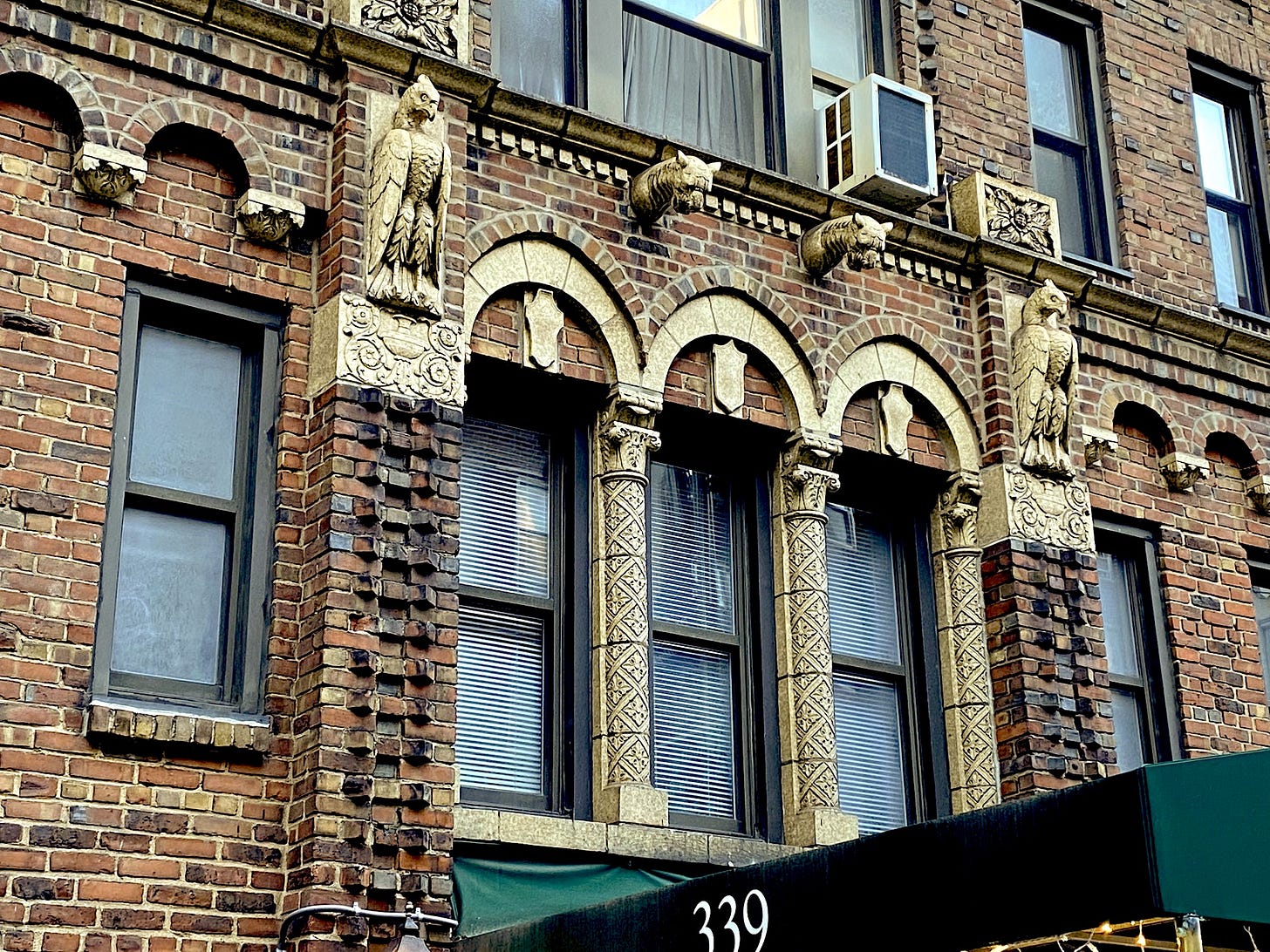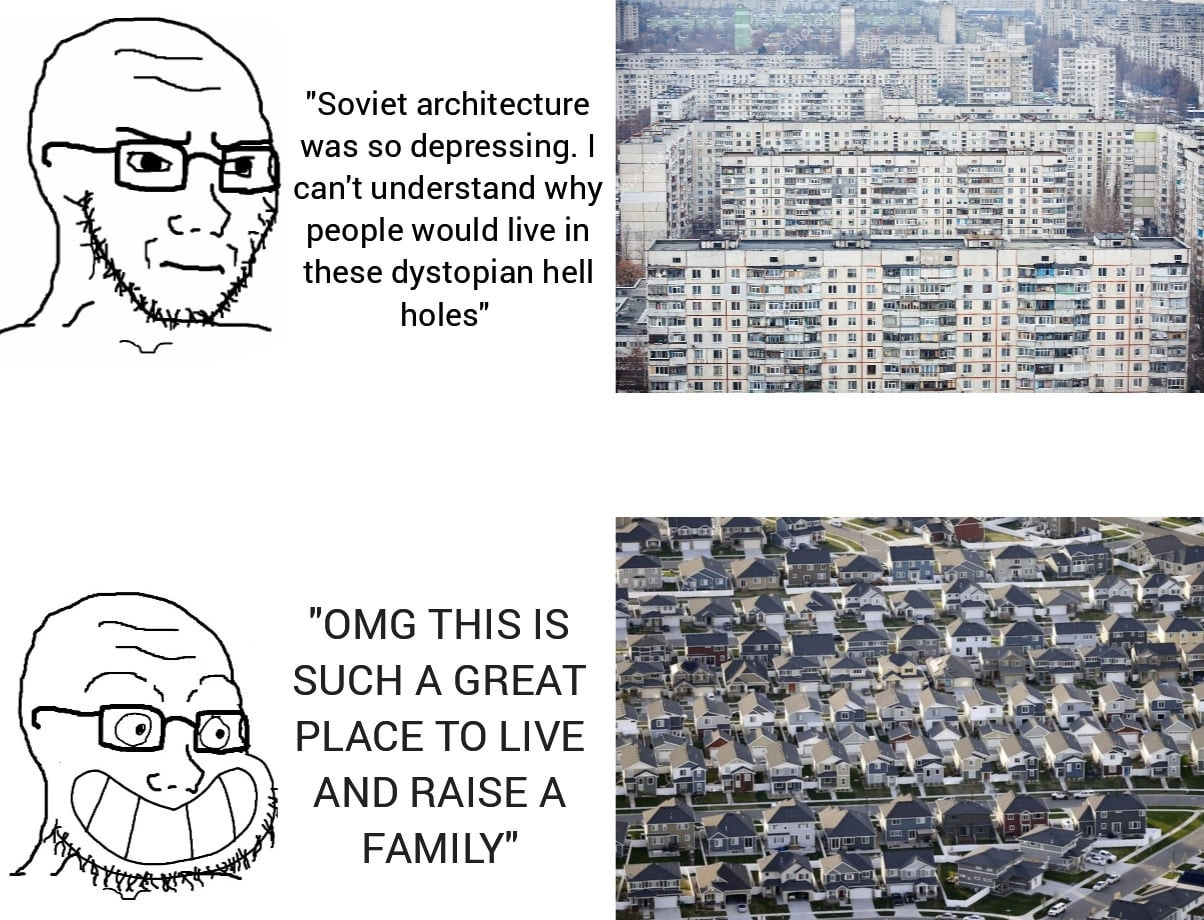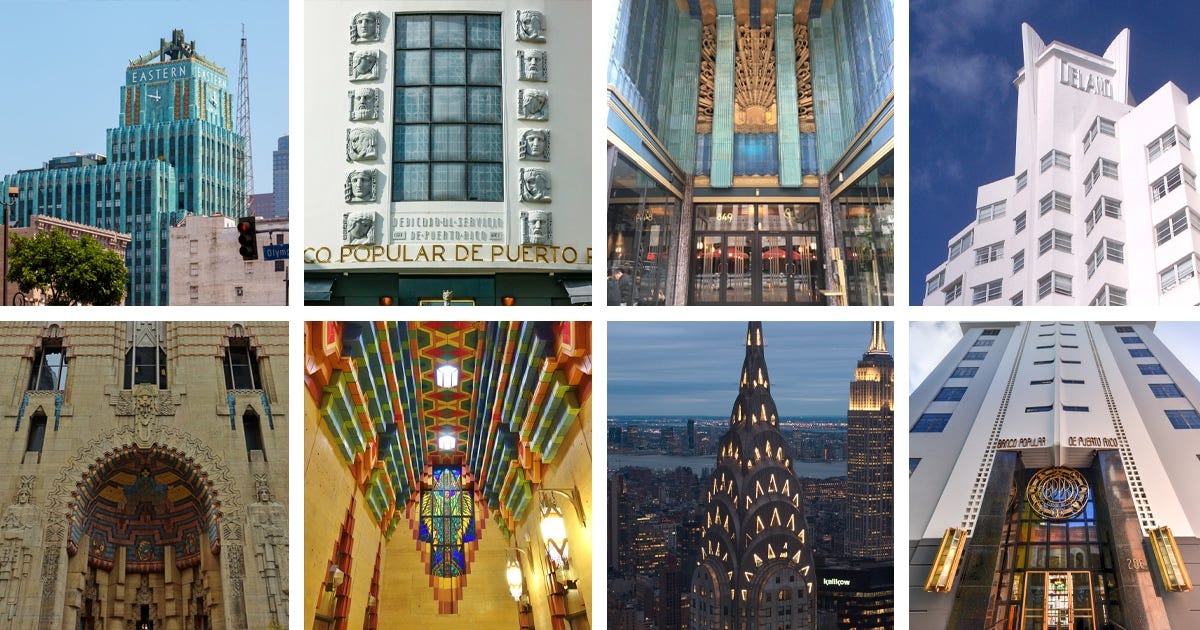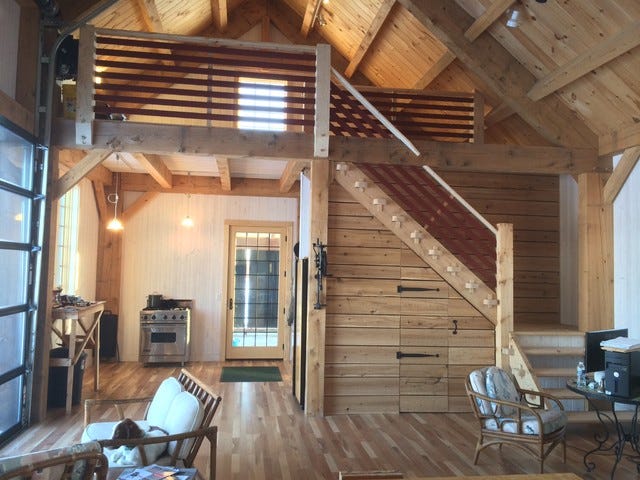Have you noticed how all the new apartment buildings in your neighborhood look eerily similar? Or that all the comfy, red-roofed McDonald’s from your youth now have the post-modern appeal of a gray-walled dentist’s office? Ever go to an older city, perhaps in Europe, and think, why can’t we build stuff like that anymore? If you answered yes to any of these questions, you’re not alone. According to a 2020 poll by the National Civic Art Society, 72% of Americans prefer traditional architecture over modern architecture. This preference is nonpartisan, with 73% of Republicans, 70% of Democrats, and 73% of Independents favoring traditional design. The poll also found that traditional architecture is the clear winner across all demographic groups, including gender, age, geographic region, household income, education, and race/ethnicity.
The modern world is suffering from a lack of beautiful architecture, and it’s literally killing us. Many, like Tucker Carlson, postulate that this was done on purpose. In his recent interview with Chris Cuomo, he decries, “the oppression of post-modern architecture, which is designed to demoralize and hurt you and destroy your spirit. Buildings that are warm and human and that elevate the human spirit are pro-human, and brutalism, for example, or the IMP glass boxes that crowd every city in the United States, those are not elevating whatsoever. What’s the message of working in a cube, in a room with a synthetic drop ceiling, and drywall on the walls and fluorescent lighting?”
It seems like everything built in the last half century is an attack on humanity. But it wasn’t always like this. For hundreds of years, all the way up until the early 20th century, we built apartment buildings with facades like this.
So, what happened? Like so many other disciplines, it all changed in the mid 20th century, with the rise of post-modern thought. According to Psychology Today, “Modern design was born out of a desire to leave behind the ornamentation and excesses of 19th century Europe. In essence, it's a stripped back, pared down style of design, favoring clean, often angular lines, neutral colors in tones of gray and beige, bare materials, and a general sense of spareness and minimalism.” Some scholars, like Ann Sussman, think Mental disorder gave us modern architecture. Sussman was referring specifically to autism (Le Corbusier) and PTSD (Walter Gropius and Ludwig Mies van der Rohe). In short, traumatized by the suffering of the world wars, neurodivergent “intellectuals” decided to throw out all tradition, instead of taking a more nuanced approach. I could go on for hours about the evils of post-modern thought, but I’ll save that for another article.
Empirical science also supports the idea that modern architecture is harming our physical and mental health. A 2007 study published in the journal Neuropsychologia explains that sharp angular forms have an unconscious emotional effect on us. Viewing angular forms, as opposed to curves, triggers activation in the amygdala, a small structure in the limbic system of our brains associated with fear. One study found that fluorescent light bulbs increase UV-related eye diseases by 12%, and neuroscientists in 2021 released a study that explains how unattractive urban environments produce stress and mental fatigue.
Some have compared our current architectural epoch to that of the infamous “commie blocks” of the Soviet Union. To be fair, the Soviet Union did build some beautiful architecture, but it’s hard not to see the comparison with memes like this.
Enough has been said about the negatives of post-modern architecture, and most of us want to change it, so I’ll stop being so pessimistic, and propose some solutions.
Most of us are not architects by trade, but there are still ways that we can make a change. In a previous article, Stop Mowing Your Lawn, I emphasized how important it is for us to change what is perceived as high-status. A similar change is long overdue in the architectural realm. In most of the world, the profit incentive is king. Therefore, we have to make a conscious effort to punish developers who build ugly buildings. The cost of renting a beautiful building may be steep at first, but in the long-run, the market will react, and developers will wise up, building more beautiful projects, or risk bankruptcy. The stereotypical Millennial who spends $2,000+ per month to live in a plywood box should be shamed and made fun of. You don’t need to spend that much money to live in a hamster cage, after all.
In the American context, I’m hugely biased to the Art-Deco style. In my opinion, it perfectly represents the American spirit, seamlessly blending classical and modernist design elements. Here’s some great examples of the Art-Deco style.
In Sweden, a digital media company and think tank was founded in 2014 called Arkitekturupproret (Architectural Uprising). They seek to defend classical architecture while simultaneously contesting modern architecture. They even issue an award every year for the ugliest house in Sweden. Its work is analogous to that carried out in the United States by the ICAA. In a suburb of Paris, Le Plessis-Robinson, drastic efforts were taken to revitalize the ugly architecture in a more traditional style, and the results look amazing.
Many Europeans make fun of American home construction for being built out of wood. European buildings are more often constructed with stone or brick, simply because of the relative scarcity of timber in Europe. Wood homes are not inherently ugly or flimsy, but the Europeans are on to something. Historically, our wooden homes were built in a style known as timber frame, giving us beautiful examples like this:
But that all changed in the 1800’s when stick framing replaced the older style simply because it was cheaper, faster, and easier to build. One benefit of timber frame construction is that it is sturdier, far less likely to be affected by natural disasters, and it allows you to have large, exposed beams in the interior space, providing a cozy, cabin-like feel. Many people build their own timber frame houses, because there are much less pieces required. Here’s a resource on how to do just that.
Another suggestion I would make is that we expand the application of the National Register of Historic Places, a federal government program that protects lovely antique buildings from being demolished by rootless developers. President Teddy Roosevelt’s expansion of the National Park System is a great comparison. During his presidency, Roosevelt protected over 230 million acres of public lands. We could enact a similar program with architecture, expanding the definition of what is considered “historic”.
In conclusion, the problems of post-modern architecture are a serious concern, that surprisingly unites both sides of the aisle, even in an era of growing political polarization. Science has shown that it’s not just in your head, but rather there are tangible negative health repercussions that come from allowing mentally ill people to erect horrendous buildings. There is much more to be said on the topic of architecture, but this is just meant to be a simple outline on the topic and some possible solutions. In the future, I plan on writing in depth about the pitfalls of car-centric urban planning, advocating instead for an expansion of public transit, some practical, austere solutions to homelessness, and maybe even replicate Arkitekturupproret, by doing a running series of the ugliest buildings in America.





